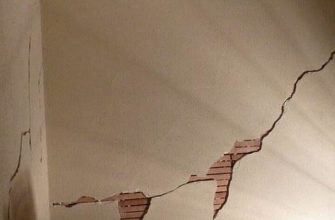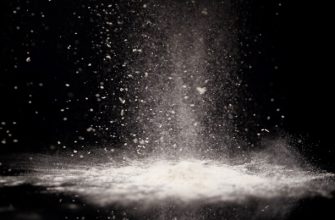Spackle is a material used to repair cracks and holes in drywall. It’s a paste made of gypsum, vinyl or plaster of Paris, which is mixed with water and applied to the drywall. Spackle can also be purchased in different colors such as white or off-white and comes in different sizes from 2 oz. to 10 oz. bags depending on the size of area needing repair (usually between 3/4 inch wide by 1/2 inch deep).
Spackling compound is available at most hardware stores or home improvement centers where they also sell tools needed for applying it such as wooden spatulas (or putty knives) used to apply the compounds and plastic scrapers used to smooth rough edges after application has dried thoroughly overnight before painting over them with primer paint then topcoat paint later on next day or within 24 hours before doing so if possible when weather conditions permit doing so if possible.
- Spackle does not have a strong odor
- The mild odor that it does have goes away once the spackle has dried
- Other materials used to make spackle
- It could also be made from plaster of Paris
- Plaster of Paris is also odorless
- A drywall spackle may contain a small percentage of latex in order to make the paste stickier and easier to apply
- Spackle has very little smell while being applied, and no smell at all when it dries
- Tips to avoid odor or stinks of spackle
- Conclusion
Spackle does not have a strong odor
Spackle is made of gypsum, which is a naturally odorless material. Gypsum does not have any strong smells or odors associated with it. Gypsum is an ingredient in many different types of construction products, including spackle; however, the spackle itself does not have an odor or scent to it at all.
The mild odor that it does have goes away once the spackle has dried
You may notice an odor when you open the can, but it’s not harmful. The mild odor that it does have goes away once the spackle has dried. It’s normal for this product to have a slight smell because gypsum is used in its formulation, as well as other ingredients like vinyl and plaster of Paris (which are also used in paint).
The primary source of odors comes from these materials themselves; however there are other factors at play here as well: primer coatings, paint layers and even wood chips can contribute to an undesirable scenting effect when applied on top of drywall repair compounds
Spackles could be made from gypsum.
Gypsum is a mineral that has no smell. It’s the main ingredient in spackle, which is used to fill holes and cracks in walls or ceilings. Gypsum can be found as an odorless powder or as a white foam made from gypsum plaster, cement and water.Gypsum is odorless. Gypsum is a mineral, and it’s used to make drywall and spackle. Spackle is made from gypsum, which has no smell when applied to walls.
Other materials used to make spackle
In addition to gypsum, spackle could be made from other materials like vinyl and/or plaster of Paris. Vinyl has a slightly offensive odor of its own. Plaster of Paris is odorless as well.
Vinyl is odorless, and therefore doesn’t have an offensive smell. It’s used in spackle because it’s the perfect mix of material and adhesive to fill in cracks and holes without causing them to expand or contract.
Vinyl can also be used to cover over moldy walls that may need to be removed completely before you can put new drywall on top of them. The vinyl will help keep moisture from getting into the wall cavity, keeping your house dryer longer than if you didn’t use any type of covering at all!
It could also be made from plaster of Paris
You may have heard of the plaster of Paris. It is a mixture of gypsum and water, used to make casts and sculptures, as well as fill holes and cracks in walls, ceilings and floors. Plaster also makes molds for casting objects like statues or art pieces.
The main ingredient in plaster is calcium carbonate (CaCO3), which comes from limestone deposits found underground near quarries where they were dug out centuries ago; it’s usually mixed with sand used to create mortar before being applied to walls or ceilings—or even floors!
Plaster of Paris is also odorless
Plaster of Paris is also odorless. The material used to make it, gypsum, does not have any scent of its own. Gypsum is used to make plaster and spackle because it can be mixed with water and then molded into shapes that are hard enough for use in building walls or ceilings without air pockets between them. If you’ve ever poured plaster into a mold before, you may have noticed that there is an odor similar to wet concrete or sandpaper when the mixture dries out completely—but this doesn’t apply when using plaster of paris!
A drywall spackle may contain a small percentage of latex in order to make the paste stickier and easier to apply
Those who are allergic or have a sensitivity to latex may find drywall spackle irritating as it may contain a small percentage of latex in order to make the paste stickier and easier to apply.
Latex allergies are common, especially among people who have pre-existing conditions such as asthma or sinus problems. Once you know that you have an allergy, there are ways to reduce your risk:
- Avoid products that contain rubber in any form (including latex). If your doctor prescribes an antihistamine for any reason-for example if you’re allergic to something else-you should take it as directed and don’t stop taking it without talking with your doctor first.* Use gloves when working with latex-containing products like caulking gun lubricant and paint rollers.* Keep pets away from areas where they might lick walls or furniture covered with drywall muds.
Spackle has very little smell while being applied, and no smell at all when it dries
Spackle has a mild odor when applied, but no odor at all when it dries. This can be caused by several different factors:
- The gypsum used to make spackles can have an odor. Gypsum is a building material that is widely used in plastering and drywall construction, and it’s possible that the initial smell of your spackle was due to this ingredient.
- If you’re using vinyl instead of plaster for your project (or if your project uses both materials), that could also be causing the smell. Vinyl has its own distinct smell, which may not be pleasant to you but doesn’t seem like something that would cause problems while you’re working on your home enhancement project!
- You might also notice some kind of chemical smell coming from whatever substance they use as primer before applying their plaster coverage-this could probably be avoided if they just used paint instead!
Tips to avoid odor or stinks of spackle
- One good tip we can give you is to use gloves when applying or drying out the spackle. Not only will they keep your hands away from the stinky stuff, but they will also prevent them from getting stained with a horrible odor.
- To avoid the smell, you can use a mask to cover your nose and mouth when you’re working with it.
- Ventilate the room by opening windows and doors to allow fresh air in, and then keeping them closed when applying spackle so that you can avoid any odor or stench from being trapped inside the room. If possible, open windows or turn on fans before applying spackle to ensure that it does not become too moist (which could lead to mold growth).
- Do not use spackle near a window because it will absorb moisture from outside and cause it to rot faster than normal; this can also cause mildew on curtains if they aren’t cleaned regularly enough!
- Do not use spackles near a door because this may trap moisture inside when they’re opened frequently during rainy days-also keep track of what kind of weather patterns exist in your area so that you know how often doors need opening during certain periods throughout each season!”
Conclusion
So now you know that there is no stinky odor with a spackle. However, just in case there is any unpleasant odor which gets noticed after applying the spackle, it would be better to not use it. In such an instance, you can always try using a different brand of plaster while measuring and mixing the amount of required powder according to the size of surface area where you are going to apply.
In fact, this way will prove beneficial as well because when made from a quality plaster powder, it comes with its own scent and smell which will make sure that the entire room smells fresh and new once applied!









